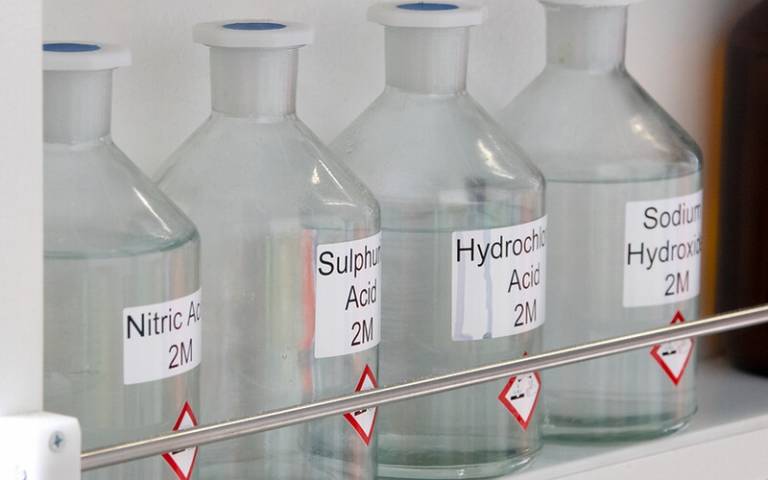Transporting dangerous goods on UCL campus
22 February 2023
Transporting dangerous goods such as chemicals, biological substances or lithium batteries between laboratories and buildings or between UCL and collaborators’ sites is subject to a range of regulations.

Dangerous goods may be pure chemicals, mixtures of substances, manufactured products or articles which can pose a risk to people, animals or the environment if not properly handled in use or in transport.
The transport of hazardous substances must be risk assessed so as to reduce the risks to the public and staff, of loss of the substance or of reputational damage.
Carrying hazardous materials
When carrying hazardous materials, especially through public areas, outside buildings or in non-specialist areas within buildings, such as corridors, the risks of spillage and contamination must be considered.
Spills of hazardous materials will cause major disruption to the public as the clean-up must be managed. Even inside UCL buildings, areas may need to be closed and those who understand the hazard must carry out the clean-up. This is usually the person who was carrying the material.
To prevent incidents:
- Ensure the substance is packed safely, such as using a sealed container, placed with sufficient cushioning and absorbent material inside another sealed outer container.
- The package should be marked and labelled to provide sufficient information in the event of an incident.
- Carry the package securely so that it can't be dropped or snatched and choose a route avoiding busy areas to reduce the likelihood of accidents.
- In the case of chemicals, safety bottle carriers are one option for transporting them and reducing the risk of accidents.
- Know what action to take if a spill does occur or another emergency is possible.
> Read about transporting hazardous materials in a laboratory and between buildings on the same site.
Using vehicles
Do not carry dangerous goods on public transport (buses, trains, taxis), in personal vehicles or in aircraft hand luggage. With a few exceptions, dangerous goods are also forbidden by International and Royal Mail.
Dry ice (solid carbon dioxide) is also classed as a dangerous good.
Using UCL-approved couriers will prevent potential beaches of conditions of carriage, insurance and transport requirements.
Where can I get further advice?
UCL has a Dangerous Goods Safety Advisor (DGSA) to advise on local, national and international transport of dangerous goods according to transport regulations. Please email the DGSA if you have a query.
UCL Mail Services can advise on UCL-approved couriers for transporting dangerous goods.
> Read about dangerous goods transportation
Feedback
Help us improve the website and let us know your suggestions, feedback, or comments. Please contact us.
 Close
Close

